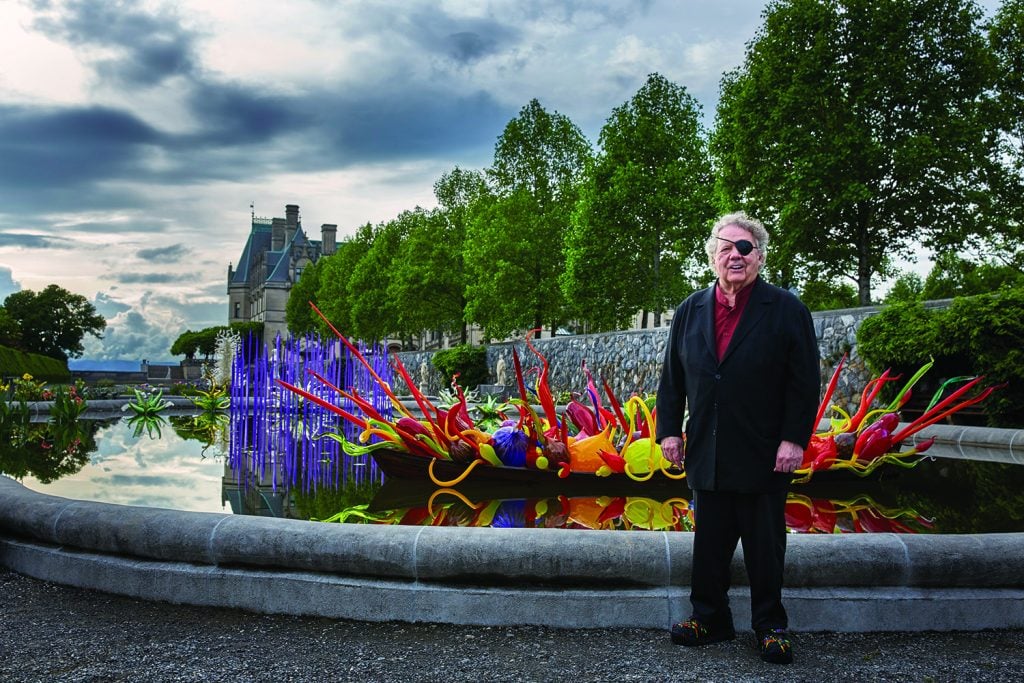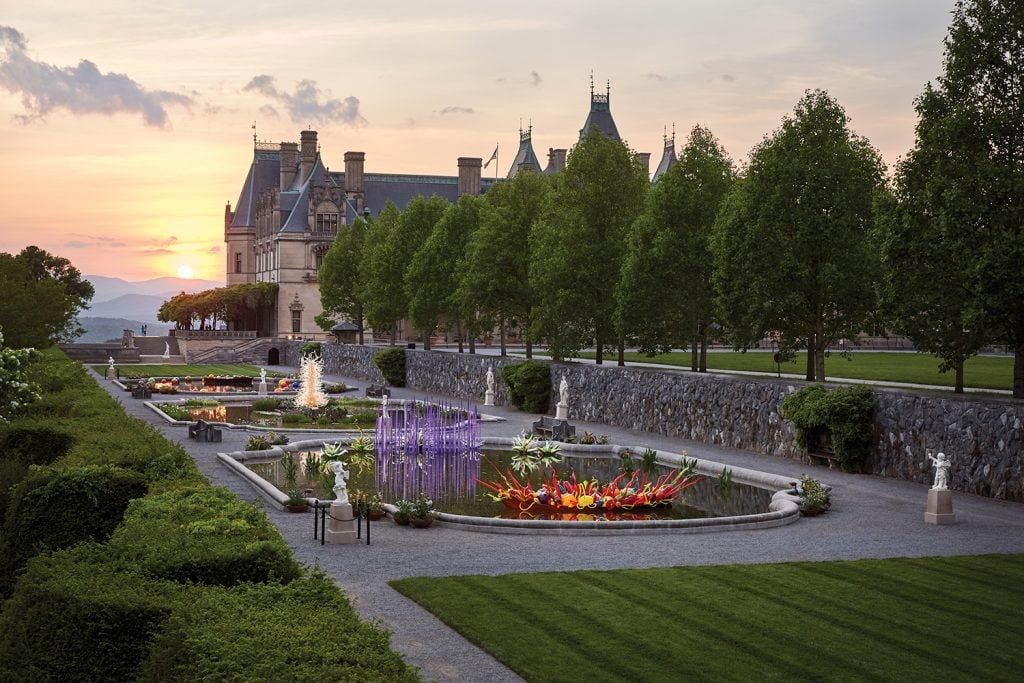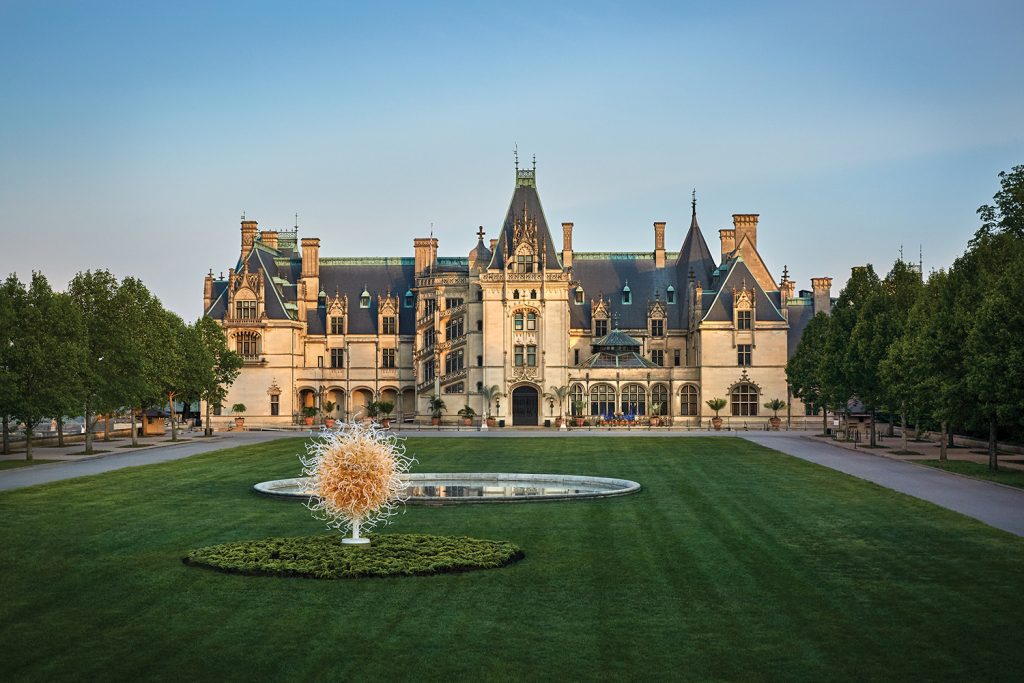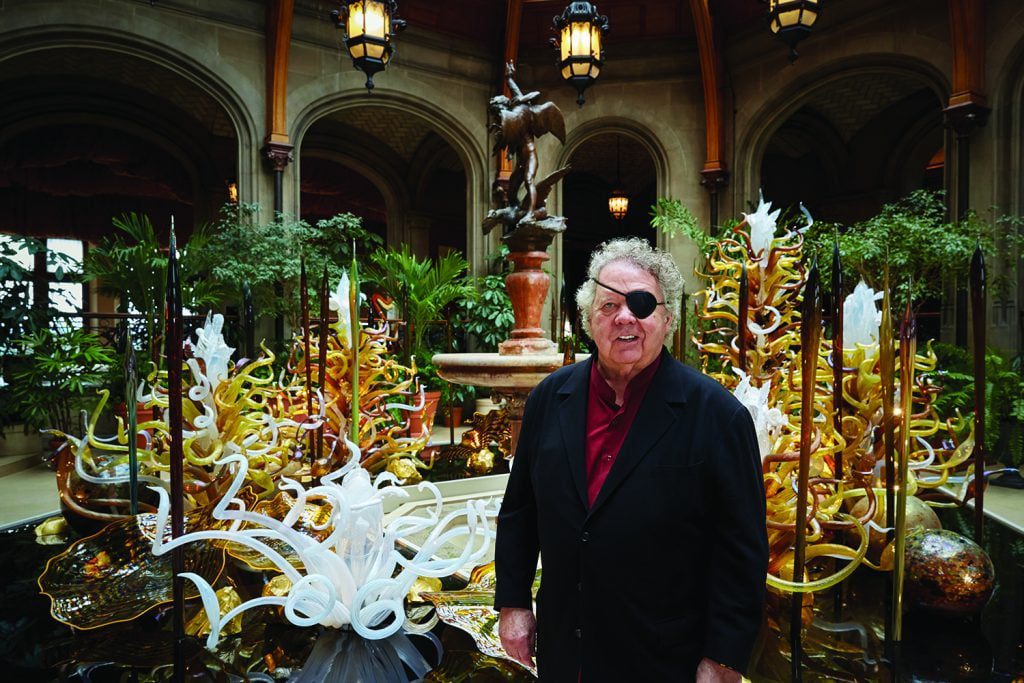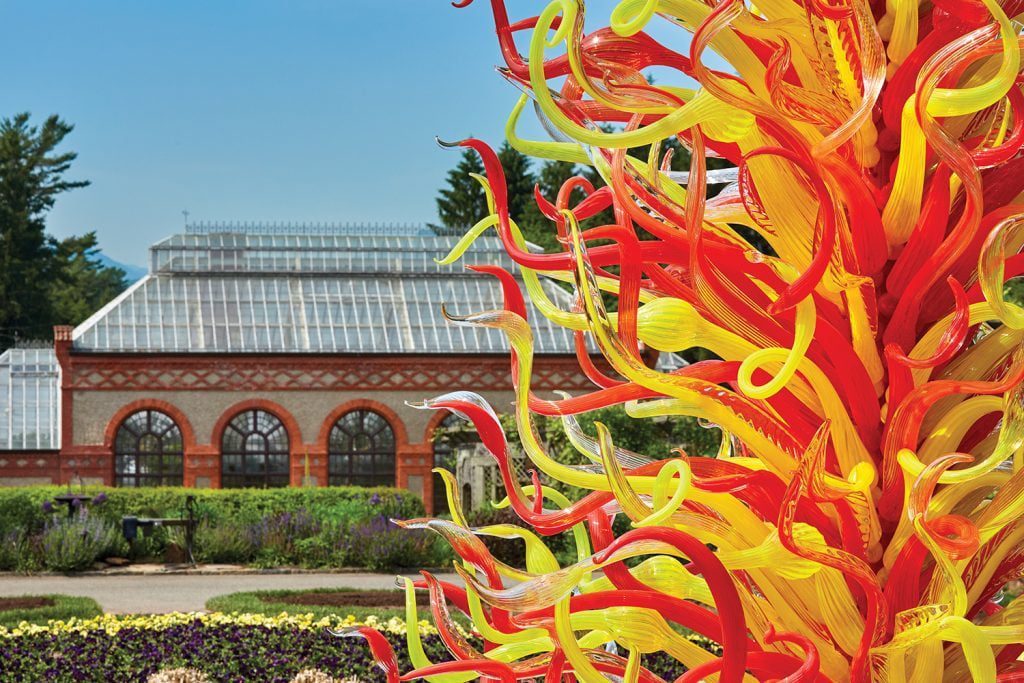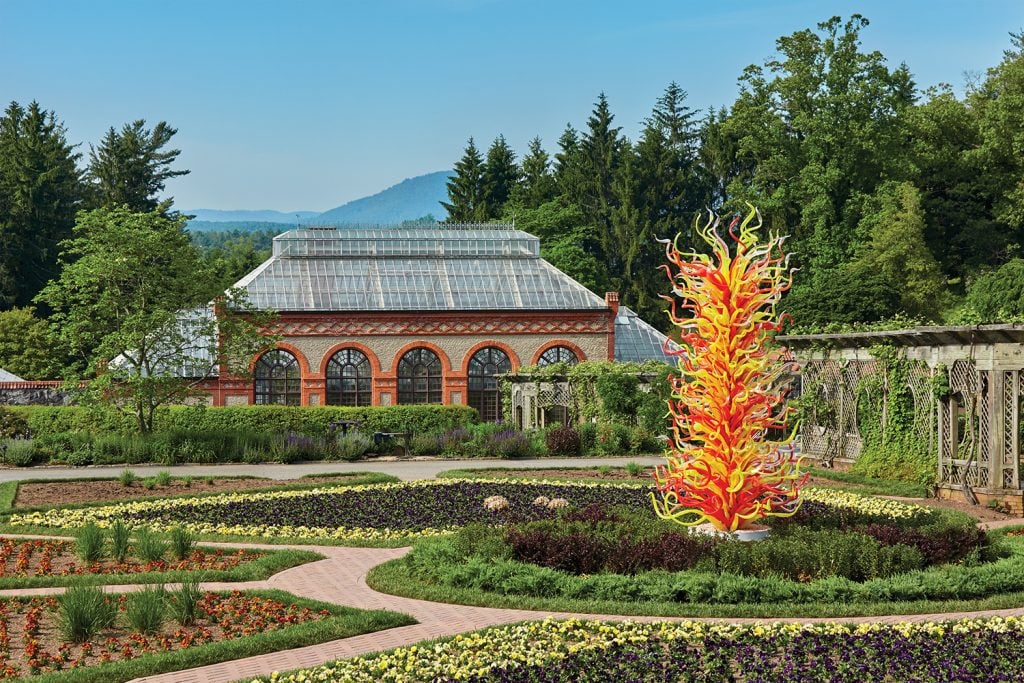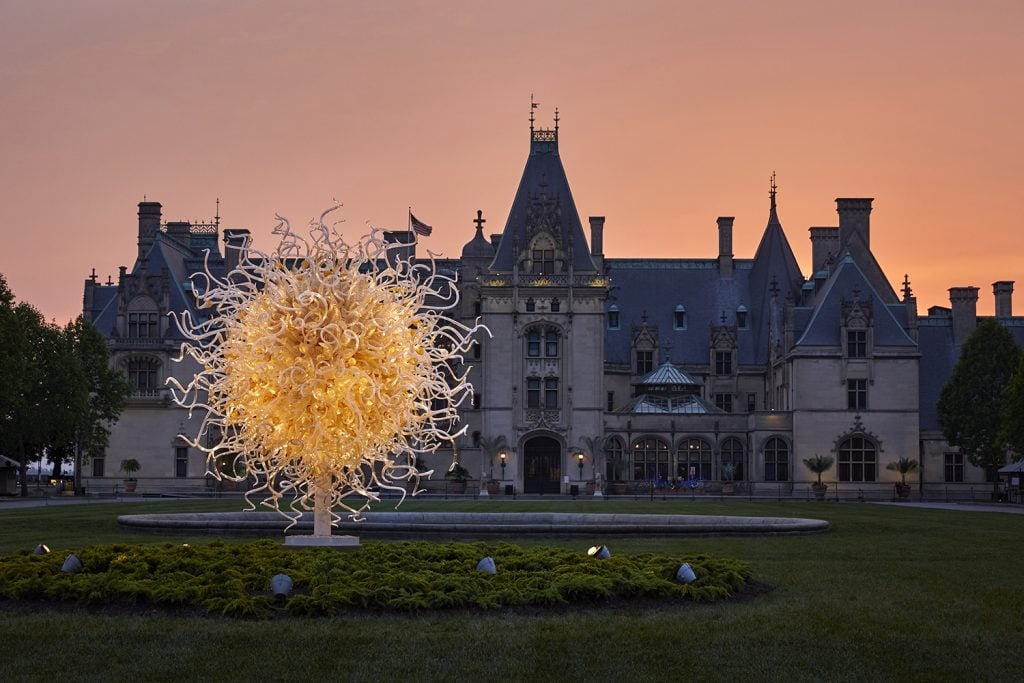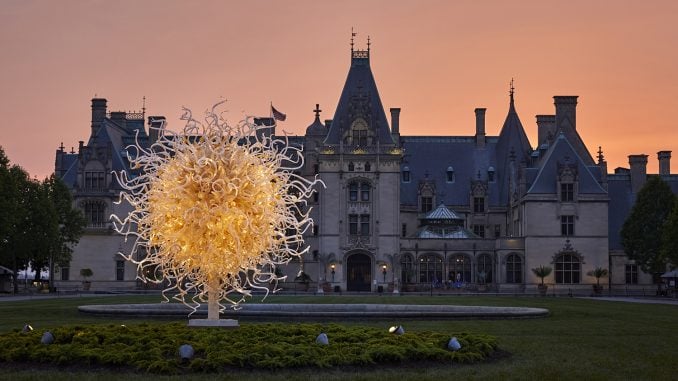
ASHEVILLE — The country’s largest private residence has played host this summer to an artist with big ideas. The pairing of Biltmore’s magnificent gardens and artist Dale Chihuly’s glass masterpieces has resulted in a series of firsts for the estate and the artist.
For Chihuly, “Chihuly at Biltmore” marks the first garden exhibit of the Seattle-based artist’s works in North Carolina. For Biltmore, the installation is the first art exhibit in the famed estate’s gardens and “Chihuly Nights at Biltmore” are the first nighttime events in the Gardens.
Chihuly was born and raised in Washington and studied interior design at the University of Washington in Seattle. In 1965, Chihuly began experimenting with glass blowing and continued studying sculpture and art. He was later awarded a Louis Comfort Tiffany Foundation grant and a Fulbright Fellowship for his glasswork.
Chihuly went on to become a leader in the development of glass as a fine art, and his large architectural installations have captivated viewers around the U.S. and throughout the world. His signature asymmetrical style flows from a process he pioneered utilizing gravity and centrifugal force to let molten glass find its shape in its own organic way.
Biltmore is itself a work of art and the gardens, designed by architect Frederick Law Olmsted, already feature more than 30 outdoor sculptures. The gardens provide the perfect backdrop for Chihuly’s large pieces which require the type of scale offered by Biltmore. Chihuly’s exhibitions and installations, such as the landmark “Chihuly Over Venice” in 1996 and “Chihuly in the Light of Jerusalem” in 2000, have always generated public interest and interaction. Chihuly began exhibiting in botanical gardens in 2001.
“I can’t tell you how gratifying it is to see this beautiful and vivid artwork in the midst of Biltmore’s historic gardens,” said Parker Andes, Biltmore’s director of horticulture. “Just as Olmsted was a leader in the development of landscape architecture, Chihuly is a leader in the development of glass as a fine art.” Andes also pointed out that the glass sculptures are not the only new exhibits in the gardens. “We worked hand-in-hand with the Chihuly team to design complementary plantings throughout the gardens to accentuate the art,” said Andes.
The Biltmore installation includes nine new works and compositions which were designed specifically for the exhibition. One new blown glass work, the Electric Yellow and Deep Coral Tower, is a classic example of Chihuly’s dramatic stalagmite-like pieces. That piece along with another tower are on display in the Walled Garden at Biltmore.
The Italian Garden plays host to several floating pieces, including Chihuly’s “Niijima Floats.” Named for the island of Niijima in Tokyo Bay, and for the small Japanese fishing floats Chihuly would find on the shores of Puget Sound as a child, Niijima Floats are very likely the largest glass spheres ever blown (up to 40 inches in diameter and up to 80 pounds). The floats are generally displayed in groups, either indoors or outdoors. New Floats were blown for the Biltmore exhibition.
The “Chihuly Nights at Biltmore” add another an additional facet to the exhibition. Chihuly made his initial forays into gardens as a way to bring people outdoors and add new light to his work. Likewise, Biltmore is utilizing the installation to add a new perspective to the gardens.
Alan Pugh, of Asheboro, recently visited Biltmore for the evening tour and called the exhibition spectacular.
“My wife suggested that we see a glass sculpture exhibition at Biltmore, and I must admit that I was not enthusiastic,” said Pugh. “But, our local arts guild put this trip together, so I went. After seeing the exhibit, I was — no pun intended — blown away.”
The scale — which is the strength of both Chihuly’s installations and the Biltmore Estate itself — along with the scale of the pieces were the keys to the installation’s impact according to Pugh.
“As many times as I’ve been to Biltmore, never at night. It is a very different experience,” he said. “If you’ve been to Biltmore a dozen times, it’s well worth going back for this exhibit.”
“Chihuly at Biltmore” is included in the regular admission to Biltmore and runs through Oct. 7, 2018.

